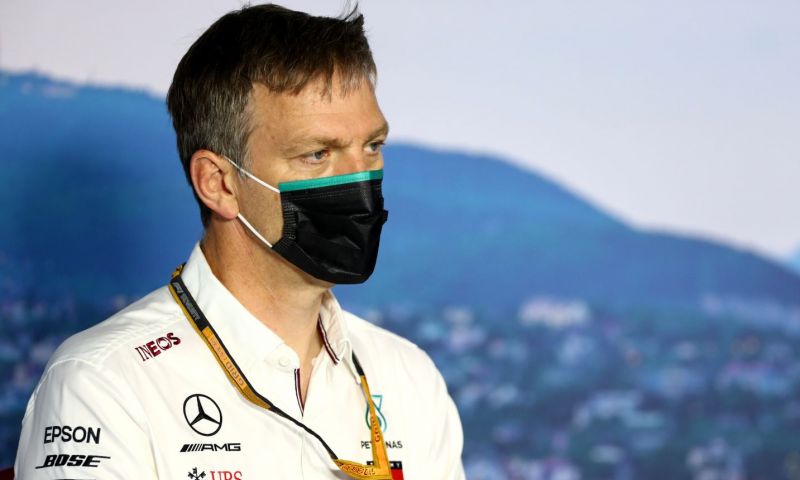Mercedes: 'New rules bring the car back to 2019 levels'
F1 News

- GPblog.com
Next year Formula 1 will enter a new era with major rule changes. Because of the pandemic, it has been postponed until next year, so the regulations will be subject to limited change this year. Nevertheless, this has had its effect and it was certainly necessary.
Outgrowing infrastructure
Although many developments are limited this year, some aerodynamic changes have been made to simplify things a bit. This will make the cars a little slower, but this has been necessary according to James Allison of Mercedes, as otherwise, the cars would have outgrown the infrastructure in which they have to work.
Allison tells Racer: "It’s been a really unusual, unfamiliar but intense winter development period for this new car. The decisions taken many, many months ago back at the beginning of the COVID pandemic where the sport decided quite pragmatically that aspects of the 2020 car would be carried over into 2021 and so we found ourselves in this very, very unusual position over the winter of not having all the normal stresses."
"So, we didn’t have to make them afresh and that’s been a weird feeling for the organization, not to have that familiar rhythm of the new car in all its glory," he continued. "Probably the most intense and difficult thing for us is reacting to the aerodynamic changes that come for 2021. There was a concern that if we left the aerodynamic development of these cars unchecked then the performance would just keep increasing, as it has been doing it for a number of seasons now."
And that's a bit where the danger lies, because "it would keep increasing to a level where the cars would just simply outgrow the tires and perhaps even aspects of the circuits. There was a good need to bring the performance down a bit from the cars so that they would be able to go into the (2021) season with the mechanical packages designed for 2020, and be confident that the performance of the car would be matched to the physical infrastructure that the car was built around.”
Two years back in time
The changes mean that Formula 1 is taking a step back, so to speak, a step that could easily span two years. As Allison concludes: "The combination of those four effects in their rawest form — just cut off and trim back in a way that the rules require — brings the performance of the car way back to sort of somewhere near 2019 levels."
"It’s been our challenge over the weeks and months since those rules were set in stone to try to recover as much of the performance as possible. That has been quite an entertaining ride in the wind tunnel and in CFD, to try and make sure that we get that performance as far as possible back onto the car," said Allison, technical director at Mercedes.

